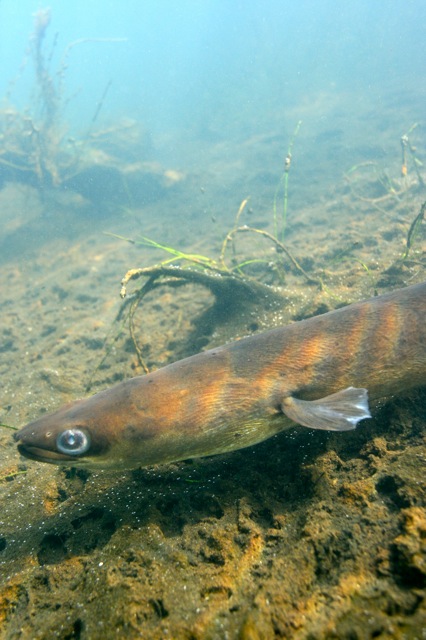Mystery Of Eels’ Bermuda Spawning Ground
A new PBS documentary premiering tonight [Apr. 17] attempts to unravel some of the many mysteries surrounding European and North American eels — including the exact location of their spawning ground off Bermuda.
In “The Mystery of Eels”, American researcher and author James Prosek says these enigmatic creatures remain ubiquitous yet enigmatic — despite centuries of study, the most basic details of eel life remain mysterious.
The mature Sargasso eel below was found in a Bermuda pond last year by Marc Outerbridge and Robert Fisher, and photographed by Dr. Philippe Max Rouja:
“Even the more scientific books pretty much admit that we don’t know very much,” Mr. Prosek told the Wired website. “As Rachel Carson said, ‘they pass from human sight and almost from human knowledge’.”
Eels’ offspring, for example, look so different from adults that they were long thought to be another species. Even more fundamentally, while every other migratory fish in the world spawns in fresh water and spends adulthood at sea, eels do the opposite.
Every year from August to November, American and European eels migrate to the Sargasso Sea off Bermuda. After spawning, the adult eels die. The eggs hatch after several days and develop into a larval stage which is shaped like a willow leaf.
The larvae drift in the ocean for several months and then enter the Atlantic currents to be carried north toward Europe and North America.
“We don’t know [exactly] where they spawn — for American and European eels, it’s somewhere east of Bermuda, but we don’t know the exact location — or even how they find the spawning places,” Mr.Prosek told Wired. “They make their way back to where they were born, but it’s presumably not the same place, because it’s not a hard landmark. It’s the head of some current or temperature front.”
Read More About
Category: All, Environment



very interesting… and to know of the value of the Sargasso in this equation.